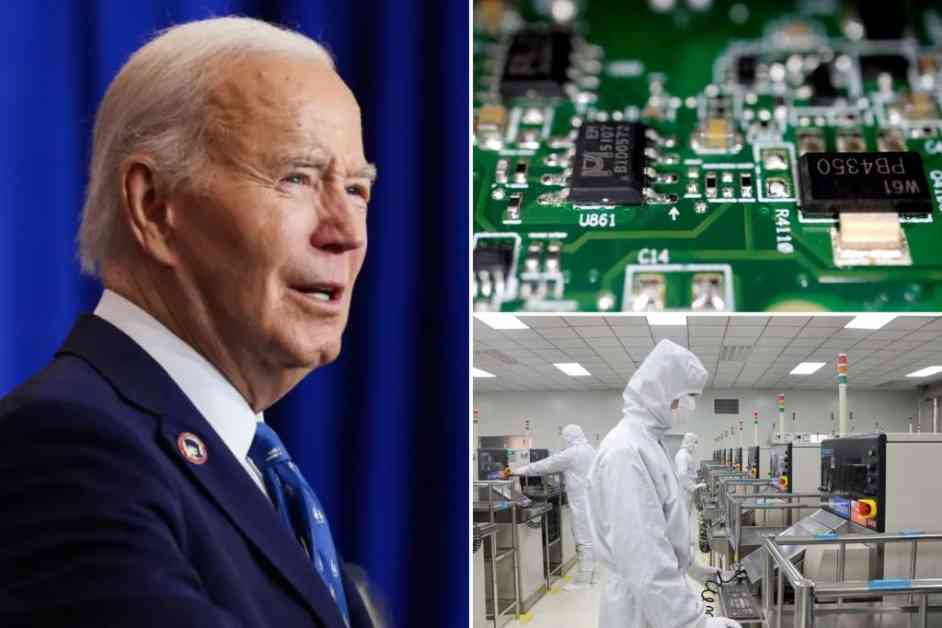Investigation into Chinese Chip Trade by Biden, Transition to Trump Administration
The Biden administration has initiated a trade investigation into older Chinese-made “legacy” semiconductors, raising the possibility of increased tariffs on chips from China that are integral to a wide range of everyday products. This move comes at a crucial time, as President-elect Donald Trump is set to take office on Jan. 20. The investigation, dubbed the “Section 301” probe, aims to safeguard American and other semiconductor producers from China’s substantial state-driven accumulation of domestic chip supply.
The Implications of the Probe
This probe could serve as a platform for President Trump to implement the hefty 60% tariffs he has previously threatened on Chinese imports. Departing President Biden has already imposed a 50% tariff on Chinese semiconductors, set to take effect on Jan. 1. The administration has also tightened export restrictions on advanced artificial intelligence and memory chips, as well as chipmaking equipment.
Commerce Secretary Gina Raimondo revealed that two-thirds of US products utilizing chips contain Chinese legacy chips, with half of US companies unaware of the origin of their chips, including those in the defense industry. This revelation is indeed troubling, highlighting the potential vulnerabilities in the US supply chain.
China’s Response and Industry Concerns
China’s commerce ministry has condemned the US chips probe as “protectionist,” warning of its negative impact on American firms and the global chip supply chain. On the other hand, the Information Technology Industry Council, representing the US tech sector, has expressed concerns about the probe’s implications for the global economy and supply chains.
The Biden administration plans to open the probe for public comments on Jan. 6, followed by a public hearing on March 11-12, with completion expected within a year. This investigation, conducted under Section 301 of the Trade Act of 1974, mirrors the trade practices statute previously invoked by President Trump to impose tariffs on Chinese imports.
The Future of Semiconductor Supply Chain
In the wake of the COVID-19 pandemic disrupting semiconductor supply chains and causing temporary halts in the production of critical goods like automobiles and medical equipment, the US is striving to establish its own semiconductor supply chain. To this end, the government has allocated $52.7 billion in subsidies for chip production, research, and workforce development.
As the probe unfolds, industry experts, government officials, and stakeholders will closely monitor its progress to assess its impact on the semiconductor industry, trade relations between the US and China, and the broader global economy.
In the midst of these developments, it’s crucial for policymakers to approach this investigation objectively and collaboratively, ensuring that the outcomes serve the best interests of all stakeholders involved.
Your Thoughts
How do you think this investigation will impact the global semiconductor industry and trade dynamics between the US and China? Share your thoughts and stay tuned for updates on this unfolding trade saga.












